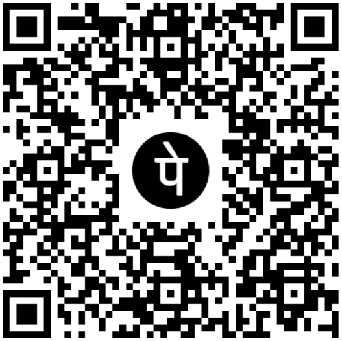Read more
5 Ways to Start Freelancing Without a Website
Use Freelancing Platforms to Get Started
You know them. You’ve probably even browsed them—Upwork, Fiverr, Freelancer.com, PeoplePerHour, and Toptal. These platforms are goldmines for beginners. They connect clients and freelancers instantly, removing the need for websites altogether.
Leverage Upwork, Fiverr, and Freelancer
Each platform has its own flavor. Upwork is great for longer-term projects and high-ticket clients. Fiverr suits microservices and creative gigs, especially if you're just testing the waters. Freelancer.com offers a wide range of opportunities but tends to be competitive.
Start by choosing one or two platforms. Don’t spread yourself too thin. Focus on building a killer profile, earning reviews, and building momentum.
How to Create a Winning Profile
Your profile is your storefront. Think of it like a one-page website. It should be clean, compelling, and client-focused.
Here’s what works:
-
Clear headline: “WordPress Developer Specializing in Custom Themes” beats “Web Developer.”
-
Professional photo: Smile, dress clean, and make eye contact.
-
Powerful summary: Focus on what you offer, who you help, and the results you deliver.
-
Portfolio: Upload project screenshots, client testimonials, or even before/after examples.
Most importantly, don’t overthink it. Done is better than perfect.
Tips to Stand Out in a Crowded Marketplace
Standing out means understanding how clients think. They don’t care how long you’ve freelanced—they care if you can help them. Use:
-
Custom proposals that address their specific project needs.
-
Samples tailored to the client’s industry.
-
Quick response times to impress and move deals forward.
-
Niche specialization: Be the “Sales Page Copywriter” not just a “Writer.”
And always, always follow up.
2. Tap into the Power of Social Media
Social media isn't just for memes and vacation pics. It's a lead generation machine for freelancers—if you use it right.
LinkedIn as Your Freelancing Portfolio
LinkedIn is more than an online resume—it’s your freelancing billboard. Optimize your headline with keywords like “Freelance Graphic Designer for SaaS Startups.” Fill your bio with value-driven copy. Post consistently: tips, case studies, client wins, or even “behind the scenes” posts.
Engage with your ideal clients’ content. Send personalized connection requests. And don’t hesitate to pitch—if done respectfully, it works wonders.
Instagram and Twitter for Creatives
Designers, copywriters, and digital artists can showcase their work directly on Instagram and Twitter. Treat these platforms like mini portfolios.
-
Use carousels to show project steps.
-
Add engaging captions with results or client feedback.
-
Hashtags can help visibility: #freelancedesigner, #copywriterforhire, etc.
-
Tagging tools, brands, or past clients can also build authority.
And Twitter? Start threads. Share your freelance journey, challenges, and learnings. Engage in comment sections. Opportunities hide in conversations.
Using Facebook Groups for Leads and Networking
There are Facebook groups with tens of thousands of active members just looking for freelancers. Search for:
-
“Freelance Writers”
-
“Remote Jobs”
-
“Online Business Owners”
Provide value before pitching. Answer questions, give feedback, and when job posts go up—comment fast, DM faster. One solid connection here can lead to recurring work.
3. Utilize Online Marketplaces and Communities
Aside from freelancing platforms and social media, there’s an entire universe of niche communities and marketplaces where clients hang out—and where freelancers get booked, fast.
Reddit, Discord, and Niche Forums
Subreddits like r/freelance, r/hireawriter, r/remotework, or even industry-specific ones are often filled with clients seeking help. Just don’t spam. Instead, offer advice, share tips, and be genuinely helpful.
On Discord, join freelance, design, tech, or writing servers. They often have #job-board or #hire-me channels where you can pitch your services and build relationships.
Niche forums (e.g., web dev, gaming, SaaS) are also hidden gems. When people trust your insight, they’ll want to work with you—even without a website.
Behance and Dribbble for Designers
If you’re a designer, you don’t need a website to show off. Use Behance or Dribbble to upload projects with detailed case studies. These platforms are designed to get your work seen—and clients do hire from them.
Update regularly. Share to social. Engage with others. Let your designs speak for themselves.
Product Hunt and Indie Hackers for Developers and Makers
For developers, creators, and makers, these platforms are gold. Product Hunt lets you showcase tools or MVPs. Indie Hackers is a fantastic place to share what you’re building, get feedback, and find collaboration or job offers.
Don’t underestimate how many clients are watching—even if they’re not posting.
Word of Mouth and Personal Network
Think your personal network can’t help you freelance? Think again. Some of the highest-paying and most loyal clients come through people you already know. You don’t need a flashy website—you need to be top of mind when someone says, “I need a freelancer.”
Reach Out to Friends, Family, and Old Colleagues
Start with what you already have: your contact list. Reach out to friends, family, classmates, past coworkers, and even former bosses. You’re not begging—you’re offering value.
Here’s how to do it without sounding desperate:
-
“Hey [Name], I just started offering freelance [copywriting/design/development] services. If you or anyone in your circle needs help with [specific service], I’d love to chat.”
-
Keep it simple. Keep it casual.
-
Personalize each message.
-
Don’t expect immediate results. Let the seed grow.
What happens next is magical. Someone remembers you when they hear a need. They connect you. You land a gig. All without a website.
Ask for Referrals Without Being Pushy
Once you land a few gigs, use those to create a referral system. Most happy clients are willing to spread the word—but only if you ask.
Here’s a polite way to do it:
-
“If you know anyone else who could use help with [your service], I’d be grateful if you’d pass my name along.”
You can even create a small incentive system—like a $50 gift card for any successful referral. Doesn’t need to be fancy.
Make it easy. Provide your contact info, sample work, or even a quick PDF to forward. That’s your pitch kit.
Create a Referral Engine Without a Website
Here’s the trick: build a referral loop using tools instead of a website.
-
Use Google Docs or Notion for a portfolio.
-
Share links to testimonials in Google Sheets or Canva slides.
-
Create a simple pitch PDF with services, pricing, and samples.
Send this instead of a link to your site. It’s clean, personal, and effective. Plus, it shows you’re resourceful, and clients love that.
5. Use Free Portfolio Builders and Tools
Who said you need a domain and a dev team to showcase your work? There are free, powerful tools out there that can act as your stand-in website—without the cost or hassle.
Linktree, Notion, and Google Drive as Portfolios
Let’s break it down:
-
Linktree: Perfect for linking all your work in one place. Add your social profiles, testimonials, pricing sheets, and more.
-
Notion: One of the most flexible portfolio builders out there. Create a clean, branded page in minutes. Add case studies, client logos, about sections, and pricing.
-
Google Drive: Don’t sleep on it. Upload PDFs, images, or decks, and organize them into folders like “Logo Designs,” “Landing Pages,” or “Writing Samples.” Share the link.
You can do all this in an hour. No coding. No design stress. And it works beautifully.
Sending Proposals with PDF Portfolios
When applying for gigs—especially on social media or by email—attach a custom PDF portfolio. This shows professionalism and saves the client from clicking around.
What to include:
-
Short bio and what you do
-
Your top 3–5 samples
-
Results you’ve delivered
-
Testimonials (if available)
-
Contact info
Use free tools like Canva to design it quickly. Make it specific for each industry if you can. One for coaches, another for SaaS, another for eCommerce. It’s easy to tweak once you’ve got the structure.
Building Trust Without a Website
Clients need to trust you. Websites help—but they’re not the only path.
Here’s what builds trust without one:
-
Clear, prompt communication
-
Professional documents (proposal, invoice, brief)
-
Testimonials (ask after every completed project)
-
Social proof (LinkedIn recommendations, happy comments on posts)
-
Transparency (share your process, pricing, turnaround time)
Combine that with a consistent presence on one or two platforms, and people will start to recognize your name—even without a URL.
Conclusion
Here’s the truth: waiting to build a website before freelancing is often just another form of procrastination. The digital world moves fast, and clients care more about results than how pretty your homepage looks.
Let’s recap the 5 powerful ways you can start freelancing today, no website needed:
-
Freelancing platforms get your foot in the door.
-
Social media builds awareness and leads.
-
Online communities connect you to clients in real time.
-
Your network is more valuable than you think.
-
Free tools like Notion and PDF portfolios act as your personal site.
No excuses. No delays. You’ve got everything you need to start now. Build relationships, deliver value, and the website? That can come later—once your inbox is full of client requests.
FAQs
Do clients trust freelancers without a website?
Yes, absolutely. Many clients hire based on referrals, portfolios, or direct interaction on platforms like LinkedIn or Upwork. If you can prove your skills, they’ll trust you.
How do I show credibility without a personal site?
Use testimonials, social media content, a professional PDF portfolio, and free platforms like Notion or LinkedIn to display your work and process clearly.
Can I get long-term clients this way?
Definitely. Some freelancers land retainer clients from one Twitter DM or a single Reddit thread. It's all about the relationship and your ability to deliver.
What’s the best freelancing platform for beginners?
Upwork and Fiverr are beginner-friendly. Upwork is better for long-term projects, while Fiverr is great for bite-sized gigs and creative services.
When should I think about building a website?
Once you’ve got steady work, 2–3 testimonials, and a clear niche, building a simple website can amplify your reach, but it’s not required to begin.
Job Interview Preparation (Soft Skills Questions & Answers)
Tough Open-Ended Job Interview Questions
What to Wear for Best Job Interview Attire
Job Interview Question- What are You Passionate About?
How to Prepare for a Job Promotion Interview
Stay connected even when you’re apart
Join our WhatsApp Channel – Get discount offers
500+ Free Certification Exam Practice Question and Answers
Your FREE eLEARNING Courses (Click Here)
Internships, Freelance and Full-Time Work opportunities
Join Internships and Referral Program (click for details)
Work as Freelancer or Full-Time Employee (click for details)
Flexible Class Options
Week End Classes For Professionals SAT | SUN
Corporate Group Trainings Available
Online Classes – Live Virtual Class (L.V.C), Online Training
Related Courses
Freelance Editor & Proofreader Career on Upwork Course
Upwork, Fiverr. Start a Freelance Business
Freelancing Course Upwork, Fiverr and More Home Business
Freelance Bootcamp-automate Project Management with GitHub’s Kanban Board
Freelance Editor & Proofreader Career on Upwork Course
Upwork, Fiverr. Start a Freelance Business
Freelancing Upwork with Digital Marketing




0 Reviews